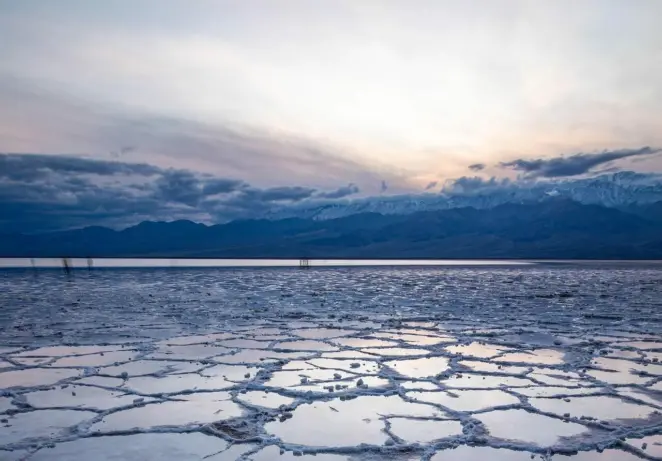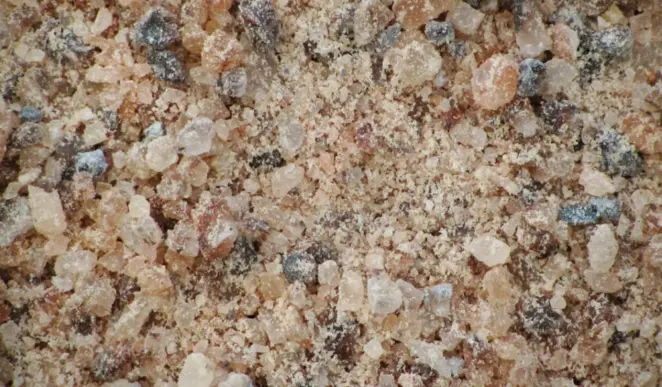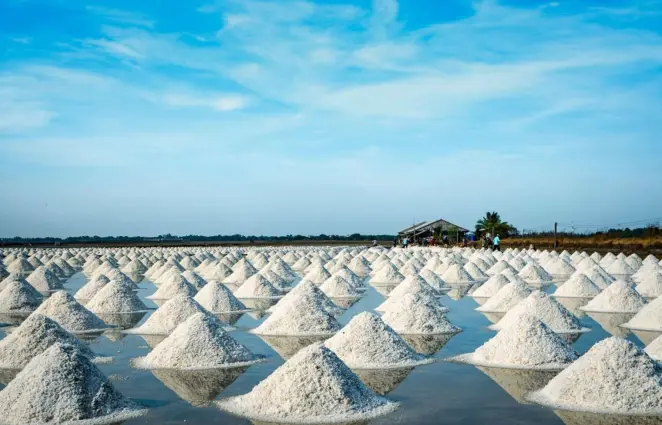What Is Rock Salt?
Rock salt, also known as halite, is a mineral made of sodium chloride. It is found in underground deposits worldwide. In Britain, it formed 220 million years ago when the region was a shallow inland sea.

Where Does Rock Salt Come From?
Rock salt is found in many places around the world, especially near dry lake beds, inland seas, and enclosed bays in hot, dry areas. In the past, large bodies of water, like the Mediterranean Sea and an ancient body of water where the Atlantic is now, dried up, leaving behind huge amounts of rock salt.
When this happened in the UK, the wind carried sand from the east, mixing it with the salt and giving it a light brown colour. Interestingly, different countries can have different colours of salt due to various geological influences. For example, iron oxide turned the salt pink in Pakistan, while clay made it dark brown and grey in Poland.
Over time, salt crystals were covered by layers of rock, soil, and remains of sea creatures. Since salt is lighter than these materials, it sometimes pushed upwards, forming dome shapes. Many of these are now buried, but some have been discovered and are still used today, such as in the Gulf Coast and Germany.
Rock salt in Britain was laid down around 200 million years ago, when Britain was a shallow inland sea surrounded by desert, near the Equator.
The Importance and History of Salt
Salt is a vital part of human life. While too much of it can be harmful, we need salt – or sodium – to live. It is one of the oldest food seasonings and has been used for thousands of years. One of the earliest known saltworks, found at Xiechi Lake in China, dates back to 6000 BC. This lake covers 120 square kilometres and is the third-largest inland sodium sulfate lake in the world.
Before modern food preservation methods like canning and freezing, salt was a key way to keep food from spoiling. People would rub salt onto meat or soak it in salty water (brine). The salt drew water out of the food, making it harder for bacteria to grow, which helped prevent spoilage.
Salt has also helped keep UK roads safe in winter for over 80 years. After World War II, the UK began focusing more on winter road safety, and people started to recognise the benefits of using salt as a de-icer. Before that, sand and cinders were mainly used to grit roads because they were easy to find and helped with traction. However, once it was discovered that salt could melt snow and ice by lowering water’s freezing point, it quickly became the main material used for de-icing.
History of Rock Salt Mining in the UK
The Winsford Mine, discovered in 1844, was the first rock salt mine in the UK and is the mine used by Online Rock Salt. Local prospectors were originally searching for coal -which, ironically, would be used to heat the brine-filled pans that made salt. The value of their find did not go unnoticed, and between 1844 and 1892 one million tonnes of rock salt were mined.
At that time, mining methods were still very basic. Workers used shovels, hand picks, and black powder explosives to dig up the salt, which was then transported to the surface in wooden barrels. The work was back-breaking and working conditions were dark and uncomfortable. Up until electricity was introduced to the mine in the 1930s, miners used tallow candles for light, sticking them to the rock walls. Some of these unused candles can still be found in the old mine cavities today.
The Winsford Mine was closed in 1892 to make way for the local Northwich mines. The salt market in the UK at the time was overcrowded and there was no room for two such close competitors. However, the Northwich mines were flooded in 1928 which led to the re-opening of the Winsford Mine - and it remains in production today, making it the oldest working salt mine, producing around 1,000,000 tonnes of rock salt annually.
How Is Rock Salt Mined Today?
The mines vary in depth from 100 metres to a mile or more. Within the mines there are networks of pathways formed by the areas from which salt has already been extracted, and they are used as roads for mining vehicles to move from one part of the mine to another and also used by the personnel to move from the shafts to the working face.
A machine similar to the pneumatic drill for digging up roads is used on the working face. It has a rotating head carrying tungsten-carbide tips, which bores into the salt. The lumps are then taken to a crushing and screening plant, without the need to be crushed by a feeder-breaker first.

Care must be taken to ensure that the mine is stable by leaving substantial pillars of salt to support the mine roof. This technique has been used for hundreds of years, and at Winsford you can see the pillars left by the original miners of the 1840s.
Before storage, the salt is treated with an anti-caking agent which will stop the pieces coagulating. This ensures that it can be held in local storage depots, ready for use as soon as the bad weather sets in!

What About White Salt?
Since white marine salt is harvested by evaporating sea water, it leaves behind a cleaner product.
White salt works just as well as brown rock salt when it comes to de-icing but does not leave behind the same residue that is often traipsed into carpets so is a better option for those who have areas with a high footfall such as schools and shopping centres.
The evaporation process requires a warm climate - much warmer than we can achieve in the UK which is why white salt is imported from places such as Spain, Egypt, and Sardinia.
Interesting Salt Facts
- Many towns in Cheshire such as Northwich, Middlewich, and Nantwich take their names from the production of salt. The endings ‘wych’ or ‘wich’ mean ‘brine town’.
- By the close of the 19th century, 87% of the nation’s salt was produced in Cheshire.
- Salt is essential to life; the average human adult has 250g of salt in their body.
- Salt is used in the production of over 14,000 products ranging from food to chemicals.
- Salt has played an important role in society’s rituals for hundreds of years; it has been used to preserve mummies in Egypt and even as part of religious ceremonies to symbolise purity.
- The world’s oceans contain a huge amount of salt; if all this salt was on land it would be enough to cover the UK with a layer of salt 50 miles deep!
- The UK’s salt mines have around 140 miles of tunnels - that’s the same distance as from London to Brussels!
Where to Buy Rock Salt?
As a leading UK rock salt supplier, we can provide high-quality rock salt and white rock salt directly to you with next-day delivery if you order before 2 pm*. Our Rock salt is available loose in bulk bags or handy pre-packed bags if you prefer.
Are you ready to place an order? Browse our full range of de-icing products today or give us a call on 01695 425 038 during our opening hours to speak to a member of the team.
*Mainland UK only.


